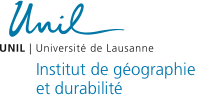Institut de géographie et durabilité de l'Université de Lausanne
Projets de recherche
Making Sense of Segregation in Public Space
| Domaines de recherche |
Mondes urbains |
| Mot-clefs |
Ségrégation urbaine Études urbaines Vie publique Diversité Coprésence Espace public |
| Financement | Fonds National Suisse de la Recherche Scientifique |
| Durée | Juin 2020 - mai 2024 |
| Site Web | http://p3.snf.ch/project-191505 |
| Chercheuses / Chercheurs |
Rérat Patrick (Supervision) Widmer Hannah (Principal·e requérant·e du projet) Duyne Barenstein Jennifer (ETH CASE) |
Encounters with strangers and exposure to difference are specific urban qualities. The common narrative frames this diversity as positive, desirable and essentially urban, even though it is highly ambivalent from a scientific perspective. Besides, very little is known about the actual nature of these encounters with strangers. Whose paths cross in public space and whose do not? This project addresses this question by analysing public space segregation. Segregation is defined as the separation of social groups in space and can occur along the lines of criteria such as ethnicity, socioeconomic status, age, gender or life course. By studying segregation in public space, this project contributes to the understanding of urban segregation and issues of social inequality related to it.
The aim of the project is to thoroughly analyse segregation in public space in all its dimensions and identify factors relevant to the mix of people and to the kind of interactions taking place between them. Moreover, the common narrative of enjoyable diversity is critically questioned by examining people's perception of and attitudes towards diversity in public space. These objectives are met by studying three squares in Zurich with a multidimensional and mixed methods approach. Segregation in public space is analysed by means of quantitative surveys and observations. The levels of residential segregation and functional diversity of the surrounding neighbourhoods, which could influence public space segregation, are calculated based on administrative data. The conceptualization, planning and maintenance of the squares could also be of relevance and are therefore studied with documentary research and interviews with planners and the administration. Additionally, qualitative in-depth interviews are conducted to understand people's experience of diversity in public space.
The project makes an important contribution to the studies of public life and urban segregation by closing a significant research gap regarding segregation in public space. Its innovative and comprehensive research design will generate findings relevant to academic research and with a broader impact on the fields of planning, urban development and housing policy.

